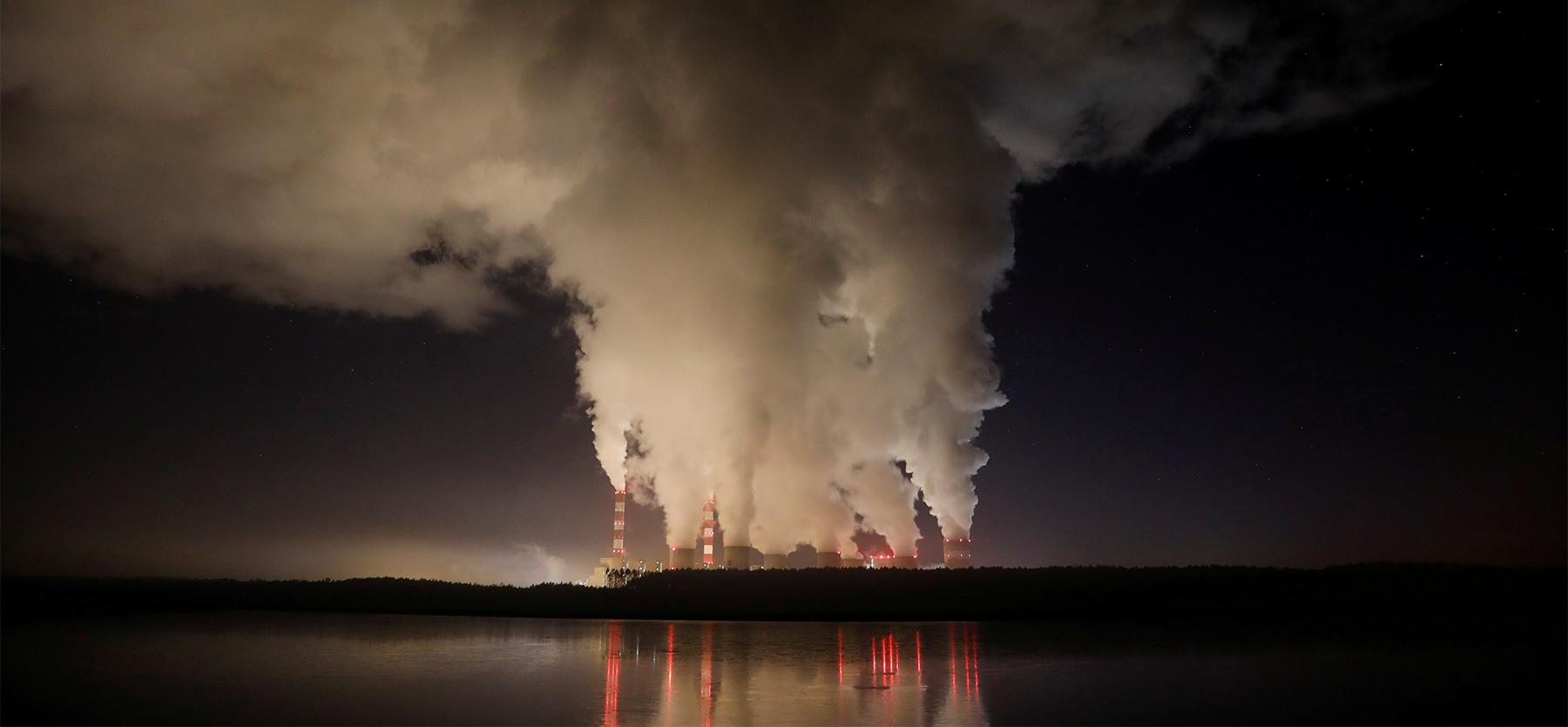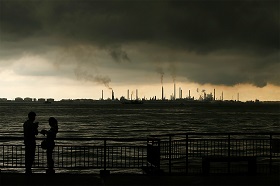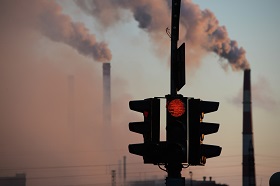Today’s global climate agenda is supported by various international institutions, and its implementation involves a broad range of measures. We are talking about a complex international regime aimed at preventing climate change. The roles and functions of its elements are inconsistent and have changed over time due to a large number of factors. The United Nations plays a special role in this regime, as it is the UN mechanisms that are called upon to coordinate international efforts in combating climate change.
The United Nations held the Climate Action Summit on September 23, 2019. While the high-profile preparations for the event had raised expectations about what could be achieved at the meeting, the actual outcome turned out to be controversial. In terms of identifying a framework for multilateral and individual actions to reduce greenhouse gas emissions, the results fell into two major groups: the interaction between state and non-state actors.
- The Summit partially met the UN Secretary-General’s expectations of national governments. A total of 77 UN member states announced their intention to eliminate greenhouse gas emissions into the atmosphere completely by 2050. Despite the fact that the list includes Germany and the United Kingdom, most of the nations in question are rather modestly sized economies. At the same time, such climate-influencing economies as the United States, Brazil, India and China stated that their position on the matter remained unchanged.
- Against the background of the disparate rhetoric coming from national governments, non-state actors stood out for their commitment to achieving the proposed climate targets by 2050 or, in individual instances, by earlier dates.
It is, however, too early to say that a climate-conscious attitude has started to take hold. The majority of those countries and major private actors that are, directly or indirectly, responsible for the greatest amounts of greenhouse gas emissions do agree that measures need to be taken to cut back on environmental pollution. For example, France and New Zealand have banned the development of new oil and gas fields within their borders. At the same time, other countries are planning on developing new oil and gas fields, including in the Arctic, and a number of Asian nations intend to keep the use of coal for power generation purposes at the current levels.
The Summit demonstrated an overall conservative attitude towards the climate agenda. As a multilateral intergovernmental institution, the United Nations professes to play a coordinating role in global climate change politics. However, the ineffectiveness of its mechanisms for compelling international actors to fulfil their obligations in a responsible and rigorous manner mean that it has been criticised for effectively encouraging collective inaction. That said, toolset in place for implementing the climate agenda could be used in other formats (with fewer participants involved or with a narrower focus), while continuing to depend on the positions of individual nations.
The International Climate Change Regime
Today’s global climate agenda is supported by various international institutions, and its implementation involves a broad range of measures. We are talking about a complex international regime aimed at preventing climate change. The roles and functions of its elements are inconsistent and have changed over time due to a large number of factors. The United Nations plays a special role in this regime, as it is the UN mechanisms that are called upon to coordinate international efforts in combating climate change.
The Intergovernmental Panel on Climate Change (IPCC), established in 1988, is the key advisory body representing the international professional community on climate change issues. The fundamental document on cooperation in this area is the 1992 United Nations Framework Convention on Climate Change [1], the goal of which is to prevent dangerous anthropogenic interference with the planet’s climate system. A total of 197 countries are party to the Convention. To ensure the implementation of the Framework Convention, IPCC prepares reports and analytical documents summarising global climatology data.
The 2015 Paris Agreement was a kind of interim result of recent international cooperation on climate change mitigation. The document calls for containing the average global atmospheric temperature growth at between 1.5 and 2 degrees centigrade above pre-industrial levels in this century by enforcing low-carbon, climate-resilient development. To date, the agreement has been signed by 196 countries plus the European Union. It has been ratified by 187 countries plus the European Union. Russia also assumed the necessary obligations under the Agreement on September 21, 2019. Decree No. 1228 of the Government of the Russian Federation formalized Russia’s ratification of the Paris Agreement, and on September 23, Adviser to the President and Special Presidential Representative on Climate Issues Ruslan Edelgeriyev announced the news at the UN Climate Summit.
Many observers argue that the UN, despite its universal nature, has never been the only, or even the most important, international institution spearheading global efforts to prevent climate change. At different points in time, a number of international institutions, big and small and with varying degrees of influence, took it upon themselves to coordinate actions to prevent climate change. Prior to the early 1990s, the international climate agenda was initiated and then promoted by the G7. Subsequently, due to a number of systemic factors, the United Nations was largely left to deal with the issue for more than two decades. However, today we can say that international institutions are once again taking over as coordinators of international climate action. These institutions, which either unite the largest, most powerful actors or represent specialized organizations, have effective instruments at their disposal for implementing climate-related decisions. At present, the climate agenda is actively supported by the G7, G20 and G77 [2], as well as by the World Bank, the International Red Cross and Red Crescent Movement, the African Union, the International Civil Aviation Organization (ICAO), the Universal Postal Union and other organizations [3].
The UN is, therefore, just one component of the international climate change regime.
Climate Agenda and UN
The UN climate agenda is not formed by a single decision-making entity. Rather, it is developed and actively promoted by a number of the organization’s bodies. These include the UN General Assembly, the UN Security Council, the UN Environment Programme and the Office of the United Nations High Commissioner for Refugees.
The UN Security Council deals with a broad range of climate agenda issues related, whether directly or indirectly, to maintaining peace and security. Such issues include responding to natural disasters and global natural phenomena; preventing food security threats; providing access to safe drinking water in individual regions; responding to climate change in small island states; incorporating green action in peacekeeping operations; working with climate refugees, etc. Since 2007, the Security Council’s agenda has been progressively expanded to incorporate more climate-related issues [4]. This, however, once again brings to the fore such existential questions as whether there is a direct correlation between climate change and security and if the Security Council should be reactive or proactive when dealing with climate change.
An interesting situation is developing with regard to the Office of the United Nations High Commissioner for Refugees (UNHCR). Even though the UN Convention Relating to the Status of Refugees does not grant refugee status to any climate-related events, the UNHCR Executive Committee has ruled to expand the office’s mandate to include obligations before those refugees who are unwilling or unable to return to their respective countries due to climate change-related phenomena. This broadened understanding of the connection between climate change phenomena and the situations of certain refugees is due to the fact that UN Secretary-General, Antonio Guterres, who is an avid supporter of the climate agenda, was UN High Commissioner for Refugees for ten years.
The General Assembly is the most active body within the United Nations when it comes to promoting the global climate agenda. It holds annual conferences on global issues and shapes the global public opinion on the most pressing issues.
Results of the UN Climate Action Summit
The United Nations held the Climate Action Summit on September 23, 2019. The high-profile preparations for the event had raised expectations about what could be achieved at the meeting. In the run-up to the Summit, the Secretary-General repeatedly urged national governments to not limit their work there to general statements and instead present detailed action plans for reducing atmospheric greenhouse gas emissions. He stressed that, rather than adopting just another declaration, realistic national emission-cutting targets should be officially set in 2020 to replace of the current targets [5]. In terms of specific tools for action, Gutteres points to economic and fiscal emission-cutting measures to be enshrined in national laws.
The outcome of the summit turned out to be controversial. In terms of identifying a framework for multilateral and individual actions to reduce greenhouse gas emissions, the results fell into two major groups: the interaction between state and non-state actors.
1) The summit partially met the UN Secretary-General’s expectations of national governments. A total of 77 UN member states announced their intention to eliminate greenhouse gas emissions into the atmosphere completely by 2050. Despite the fact that the list includes Germany and the United Kingdom, most of the nations in question are rather modestly sized economies. At the same time, such climate-influencing economies as the United States, Brazil, India and China stated that their position on the matter remained unchanged. India’s announced plans to develop renewable energy inspired some optimism. China had been expected to make a similar announcement, but never did. Minister of Foreign Affairs of the People's Republic of China Wang Yi merely reaffirmed the importance of such mechanisms as the Framework Convention and the Paris Agreement and reiterated Beijing’s commitments to its obligations under these two documents. At the same time, he criticized “certain parties” for withdrawing from the agreements, while stressing that this withdrawal would not shake the collective will and joint efforts of the international community to combat climate change.
UN Secretary-General Antonio Guterres once again expressed his concern at the reluctance of individual nations to do more in terms of climate protection, given that President of the United States Donald Trump has every opportunity to pull out of the Paris Agreement before the November 2020 presidential election.
Special Adviser on Climate Change to the UN Secretary-General Robert Orr was less diplomatic when saying that “governments are not where they need to be today [on climate change].”
One important achievement of the Summit was the decision of a number of developed countries, mainly in Europe and Asia (France, Germany, Norway, the United Kingdom, South Korea, etc.) to provide additional assistance to the Green Climate Fund, which is an international mechanism for funding measures in developed countries to counter and mitigate climate change.
A potentially controversial consequence of the Summit could be the possible strengthening of the climate agenda against the background of the weakening role of the United Nations as a coordinator of this process. We are talking here about moving the agenda from the auspices of the United Nations to the remit of intergovernmental economic relations. One indication of this possibility came in the form of a recent statement by President of France Emmanuel Macron to the effect that trade between individual countries should develop with climate change in mind. Macron warned against launching new trade negotiations with countries that do not adhere to the Paris Agreement [6].
Given that there are no more than a dozen countries left that have not yet signed the Paris Agreement, and the United States is clearly the most prominent of these states, it would be logical to assume that Macron’s fairly provocative statement was primarily addressed to Washington.
It is quite possible that the UN Secretary-General had expected such a side effect when calling on the world to take decisive action to prevent climate change. If the United Nations does not succeed, then perhaps the leaders of the world’s leading nations will be able to influence the climate policy of the United States. However, it would seem that the open criticism of the United States on the part of Beijing and Paris is not so much intended to influence the U.S. climate policy, but rather to send signals to each other indicating that they are prepared to work jointly to develop a bilateral China–EU agreement on combatting climate change. A relevant agreement between the two parties could additionally boost the international climate regime, as was the case in 2015 when an agreement was reached between the United States and the European Union.
2) Against the background of the disparate rhetoric coming from national governments, non-state actors stood out for their commitment to achieving the proposed climate targets by 2050 or, in individual instances, by earlier dates. More than 100 cities across the world have announced plans to cut environmental pollution to zero by 2050. Private asset owners with over $2 trillion in assets and leading companies with combined value of more than $2 trillion committed to move to carbon-neutral investment portfolios by 2050. Among them are 90 major international companies, including transportation and energy concerns, which had previously been reluctant to take part in climate change actions and would limit themselves to declarations on the need to reduce greenhouse gas emissions and invest heavily in alternative and low-carbon power generation, as well as in research and development aimed at creating technologies to combat emissions. The current leading climate-conscious businesses are Amazon, Google, Microsoft, BP, Chevron, Exxon Mobil, Shell and others.
It is, however, too early to say that a climate-conscious attitude has started to take hold. The majority of those countries and major private actors that are, directly or indirectly, responsible for the greatest amounts of greenhouse gas emissions do agree that measures need to be taken to cut back on environmental pollution. For example, France and New Zealand have banned the development of new oil and gas fields within their borders. At the same time, other countries are planning on developing new oil and gas fields, including in the Arctic, and a number of Asian nations intend to keep the use of coal for power generation purposes at the current levels.
A total of 130 banking institutions, together representing approximately 30 per cent of the global banking sector, have committed to the Paris Agreement.
In addition to the conventional political and economic solutions to combat climate change, the Summit also discussed a number of innovative models and mechanisms, predominately those related to investing in projects to prevent further increases in global temperatures.
The Summit demonstrated an overall conservative attitude towards the climate agenda. As a multilateral intergovernmental institution, the United Nations professes to play a coordinating role in global climate change politics. However, the ineffectiveness of its mechanisms for compelling international actors to fulfil their obligations in a responsible and rigorous manner mean that it has been criticised for effectively encouraging collective inaction. That said, toolset in place for implementing the climate agenda could be used in other formats (with fewer participants involved or with a narrower focus), while continuing to depend on the positions of individual nations.
1. United Nations Framework Convention on Climate Change (UNFCCC) (1992) United Nations Framework Convention on Climate Change. UNFCCC, New York
2. Kirton J., Kokotsis E. The Global Governance of Climate Change: G7, G20, and UN Leadership. Routledge, 2016. 420 pp.
3. An Overview of International Climate Change Law, including the Paris Agreement // Australian Law Journal. Vol. 92, Part 10, pp. 756–765.
4. Climate Change and the UN Security Council. Ed. by Shirley V. Scott, Charlotte Ku. Edward Elgar Publishing Limited, 2018. 272 pp.
5. The United Nations, Secretary-General António Guterres Interview at the UN Headquarters in New York (May 22, 2019). Time. June 13, 2019.
6. Sengupta S., Friedman L. At U.N. Climate Summit, Few Commitments and U.S. Silence. The New York Times. September 23, 2019.







